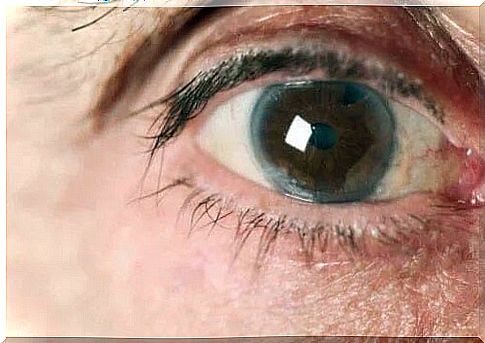Types Of Glaucoma: What You Need To Know

Glaucoma is an eye disease that manifests itself in different ways. Although it is normally associated with ocular hypertension, the truth is that there are also forms of the disease with normal eye pressure. What types of glaucoma are there?
All types of glaucoma are chronic and degenerative. This means that they will progress in the absence of proper treatment and will culminate in optic nerve damage. The worst result of the process is blindness due to the destruction of the system that captures images and sends information to the brain.
Diagnosis of glaucoma
To confirm this condition, intraocular pressure should be measured. This is a procedure that the ophthalmologist performs with the proper equipment. Although the doctor will make a measurement when there are symptoms, he can also do this in certain patients in risk groups, but who have not yet developed the disease.
Risk factors for various types of glaucoma
A fundamental problem is that the risk of glaucoma increases with age. Adults over the age of 40 are more likely to develop the disease as they age. Family history is also a good indicator. If a parent has had glaucoma of any kind, it is likely that one of their children will develop this disease. However, the condition will not manifest itself in childhood, but later in adulthood.
It is also important to associate with other eye diseases. Being nearsighted is a risk factor for glaucoma. The researchers estimate that myopic patients are twice as likely to develop intraocular hypertension as the rest of the population.

The most common types of glaucoma
The progression of the disease is very slow, chronic and degenerative. Patients tend to discover it late, after certain lesions appear. Because of this, the condition is often called silent blindness.
Treatment ranges from medication to surgery. There are various surgical options that the ophthalmologist will consider.
The name closed angle corresponds to the measurements made by ophthalmologists of the angle formed by the iris and cornea. In this case, the value is lower than what is considered normal. This altered anatomy blocks the natural drainage of fluid from the eyes.
Medical care for this disorder must be prompt. There is less time to act than in the case of open-angle glaucoma and the consequences can be more serious if you do not act quickly to treat the disease.

Congenital glaucoma
The congenital variant of the disease occurs because the baby is born with an abnormality of the angle formed by the iris and cornea, which prevents the normal development of intraocular fluid drainage channels. So, from the beginning of life, intraocular hypertension occurs.
The solution is early surgery in the young child. In this way, serious future complications can be avoided.
All types of glaucoma are serious









